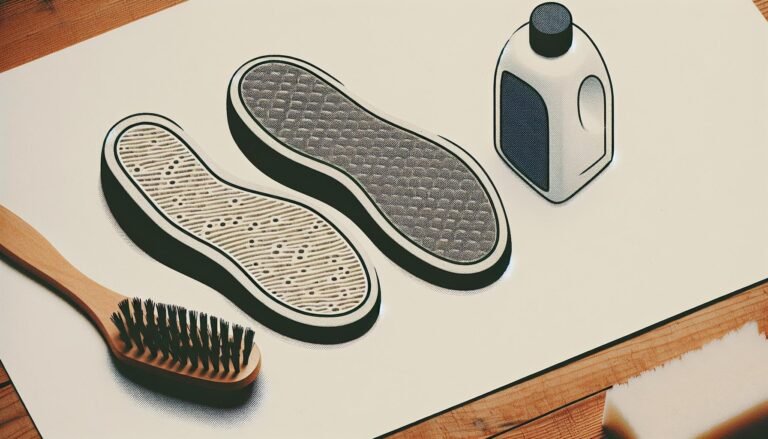How to Patina Leather Shoes: A Step-by-Step Guide
Patina is the unique character that develops on leather shoes over time. It is a natural process that gives leather shoes a distinct appearance and personality. Patina can be accelerated using various techniques, or it can be allowed to develop naturally. In this article, we will explore how to patina leather shoes, from understanding what patina is to maintaining it over time.

Understanding Leather Patina is the first step in learning how to patina leather shoes. Patina is the result of the natural aging process of leather. It is caused by the oxidation of the leather’s surface, which results in a change in color and texture. Patina is a desirable characteristic of leather shoes, as it gives them a unique and distinguished appearance. Preparing Leather Shoes for Patina is the next step in the process. Before you can start patina-ing your leather shoes, you need to prepare them properly. This involves cleaning them thoroughly and conditioning them with a leather conditioner. This will help to ensure that the leather is in good condition and ready to accept the patina.
Key Takeaways
- Understanding patina is crucial in learning how to patina leather shoes
- Preparing leather shoes for patina involves cleaning and conditioning them properly
- Techniques to accelerate patina and maintaining patina are important to keep in mind
Understanding Leather Patina
Leather patina is the natural and gradual aging process that occurs on leather products over time. It is a unique and desirable characteristic that adds depth, character, and value to leather goods. Understanding the science behind patina formation and the types of leather that are most likely to develop a rich patina can help you make informed decisions when selecting your next leather product.
The Science of Patina Formation
Patina formation is a natural process that occurs as leather ages. As the leather is exposed to sunlight, air, moisture, and oils from the skin, it undergoes a series of chemical changes that result in the development of a rich, deep patina. The patina is a result of the oxidation of the leather’s natural oils and waxes, which causes the leather to darken and develop a unique sheen.
Types of Leather and Their Patina Potential
Not all leather is created equal when it comes to developing a rich patina. Full-grain leather, which is made from the top layer of the hide, is the most natural and durable type of leather. It has a high oil content, which allows it to develop a rich patina over time. Vegetable-tanned leather, which is tanned using natural materials, also has a high potential for developing a patina due to its natural oils and waxes.
On the other hand, top-grain leather, which is made from the second layer of the hide, has a lower potential for developing a rich patina. This is because the top layer has been sanded and buffed to remove imperfections, which also removes some of the natural oils and waxes that contribute to patina formation. Additionally, corrected-grain leather, which has an artificial grain pattern embossed onto it, has the lowest potential for developing a patina due to its lack of natural oils and waxes.
In conclusion, understanding the science behind patina formation and the types of leather that are most likely to develop a rich patina can help you make informed decisions when selecting your next leather product. Full-grain and vegetable-tanned leather are the best options for those looking for a leather product that will develop a rich patina over time.
Preparing Leather Shoes for Patina

Before applying patina on leather shoes, they need to be prepared properly. Proper preparation ensures that the patina adheres well to the leather and lasts longer. Here are some steps to prepare leather shoes for patina:
Cleaning and Conditioning
The first step is to clean the shoes thoroughly. Use a soft-bristled brush to remove any dirt or debris from the shoes. For tougher stains, use a leather cleaner that is specifically designed for the type of leather your shoes are made of. Apply the cleaner with a soft cloth and rub gently until the stain is removed.
After cleaning, it is important to condition the leather. Conditioning helps to keep the leather supple and prevents it from cracking. Use a leather conditioner that is suitable for the type of leather your shoes are made of. Apply the conditioner with a soft cloth and rub gently until the leather has absorbed the conditioner.
Choosing the Right Products
Choosing the right products is crucial for achieving the desired patina effect. There are many products available in the market, such as waxes, creams, and dyes, that can be used to create a patina effect. It is important to choose products that are suitable for the type of leather your shoes are made of.
For example, if your shoes are made of smooth leather, a cream polish can be used to create a subtle patina effect. However, if your shoes are made of suede leather, a dye can be used to create a more pronounced patina effect. It is also important to choose the right color of the product. If your shoes are on the lighter side of brown, use a darker shade of cream polish, as recommended by FootFitter.
In summary, cleaning and conditioning the shoes properly and choosing the right products are essential for preparing leather shoes for patina. Following these steps will ensure that the patina adheres well to the leather and lasts longer.
Techniques to Accelerate Patina
Patina is a natural process that occurs on leather over time. However, there are some techniques that can be used to accelerate the patina process for those who want to achieve the desired look faster. Here are some manual methods and environmental factors that can help accelerate the patina process.
Manual Methods for a Controlled Patina
There are several manual methods that can be used to achieve a controlled patina on leather shoes. One of the most effective ways is to apply a thin layer of olive oil to the surface of the leather. This will speed up the patina process and give the leather a beautiful, aged appearance. After applying the oil, let it sit for several hours, then buff away any excess oil with a soft cloth. Repeat this process every few days until you achieve the desired color.
Another technique is to use shoe cream polish to create a patina effect on the shoes. Choose a shade two or three times darker than the leather to get a pronounced patina effect. Apply the cream polish in a circular motion, then buff it with a soft cloth. Repeat this process every few days until you achieve the desired color.
Environmental Factors Impacting Patina
Environmental factors can also impact the patina process. Exposure to sunlight and moisture can speed up the patina process. It is recommended to wear the shoes often to encourage the natural patina process. However, it is important to avoid wearing the shoes in rainy or snowy weather as this can damage the leather.
Regular polishing and buffing can also help accelerate the patina process. Use a soft cloth to buff the shoes in a circular motion. This will help distribute the natural oils in the leather, which will speed up the patina process.
In conclusion, there are several techniques that can be used to accelerate the patina process on leather shoes. By using a combination of manual methods and environmental factors, it is possible to achieve a beautiful, aged appearance on leather shoes in a shorter amount of time.
Maintaining Patina on Leather Shoes
Patina on leather shoes is a unique finish that adds character and depth to the leather. It is important to maintain the patina on your leather shoes to keep them looking their best. Here are some tips on how to maintain patina on leather shoes.
Regular Care and Preservation
Regular care and preservation of your leather shoes are essential to maintain the patina. Use a soft-bristled brush to remove any dirt or dust from the leather surface. Apply a small amount of leather conditioner to a soft cloth and rub it gently into the leather. This will keep the leather soft and supple and prevent it from drying out and cracking.
To maintain the shine and appearance of the leather, apply a small amount of wax polish to a soft cloth and rub it gently into the leather. This will give the leather a protective coating and enhance the shine.
When to Seek Professional Help
If your leather shoes have deep scratches or scuffs that cannot be removed with regular care, it is best to seek professional help. A shoemaker can repair any damage to the leather and restore the patina to its original condition.
It is also important to use high-quality leather products to maintain the durability of the leather. Avoid using harsh chemicals or abrasive materials that can damage the leather surface.
In conclusion, maintaining patina on leather shoes is essential to keep them looking their best. Regular care and preservation, along with the use of high-quality leather products, can help to maintain the durability and appearance of your leather shoes. If you encounter any damage that cannot be repaired with regular care, seek professional help from a shoemaker.
Frequently Asked Questions

What are the best methods to create a patina on leather shoes?
There are several methods to create a patina on leather shoes, including using a patina paint, applying shoe cream polish, or using natural patina techniques such as exposing the leather to the sun or water. The best method depends on the type of leather and the desired effect.
What products are recommended for applying patina to leather footwear?
Shoe cream polish is the most commonly used product for applying patina to leather footwear. It is recommended to choose a shade two or three times darker than the leather to get a pronounced patina effect on the shoe. Other products that can be used include leather dyes, patina paints, and natural patina techniques such as tea or coffee.
How can I accelerate the patination process on my leather shoes?
To accelerate the patination process on leather shoes, it is recommended to expose the shoes to direct sunlight or to use a hairdryer on low heat to dry the shoes after applying shoe cream polish. Another method is to use a patina paint or leather dye to create a more pronounced effect.
Is it possible to achieve a patina effect on genuine leather shoes?
Yes, it is possible to achieve a patina effect on genuine leather shoes. However, it is important to note that not all genuine leather will develop a patina. Only the highest quality leather, such as full-grain or top-grain leather, will form a patina layer.
What techniques should I use to maintain the patina on my leather shoes?
To maintain the patina on leather shoes, it is recommended to clean the shoes regularly with a soft cloth or brush and to apply a thin layer of shoe cream polish or leather conditioner. It is important to avoid using harsh chemicals or abrasive materials that can damage the leather and affect the patina.
Can I remove creases from leather shoes without affecting the patina?
Yes, it is possible to remove creases from leather shoes without affecting the patina. One method is to use a leather conditioner or shoe cream polish to soften the leather and gently massage the creased area with a soft cloth or brush. Another method is to use a shoe tree or insert to help maintain the shape of the shoe and prevent future creases.










